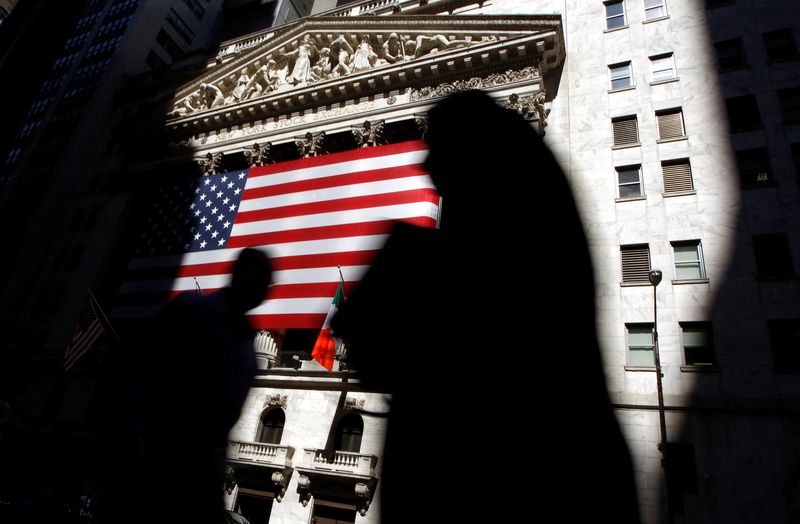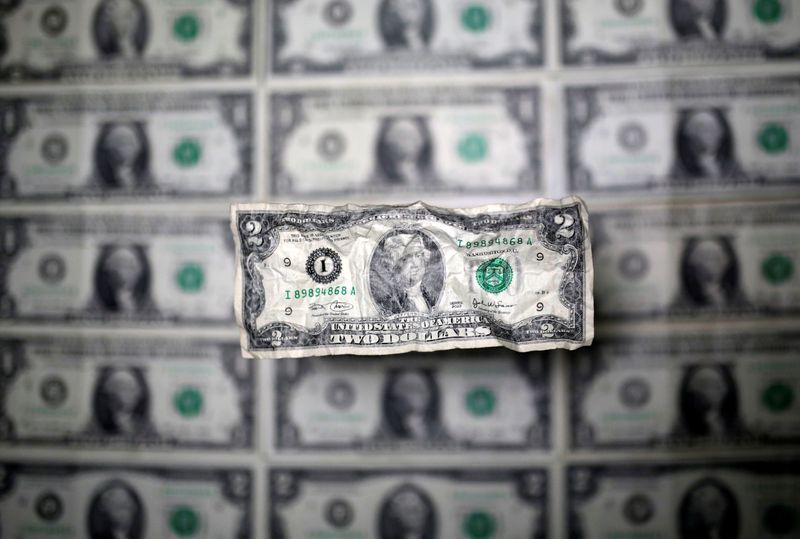Select Language

SEOUL (Reuters) - South Korea's President Yoon Suk Yeol on Wednesday vowed to relax tax rules on multiple homeowners and ease rules governing the reconstruction of apartment buildings in a bid to curb housing costs and boost supplies.
His comments come three months ahead of general elections in April. Despite a recent property downturn, housing costs remain stubbornly high in the country and are cited as a key reason for discouraging marriage and childbirth.
"House prices rose more due to insufficient supply and that is still unresolved," Yoon told a discussion forum on television, calling the issue a "huge problem".
House prices in the capital Seoul were 15.2 times higher than the average annual income in 2022, up from 14.1 times in 2021, according to government data.
South Korea's real estate market has cooled since mid-2022 as demand dampened due to aggressive rate hikes by the central bank, with its policy rate currently at the highest since late 2008.
At the forum, measures to provide liquidity support for the construction sector were also discussed to help the financing of home building, the presidential office said.

By Andrea Shalal and David Lawder
WASHINGTON (Reuters) -U.S. Treasury Secretary Janet Yellen pledged U.S. support for Egypt's economy and reforms after meeting with the North African nation's authorities on Tuesday in Washington amid talks over expanding Egypt's $3 billion International Monetary Fund loan program.
The Egyptian officials, including the country's finance minister and central bank governor, also were due to meet with IMF Managing Director Kristalina Georgieva during their visit to Washington on Tuesday, an IMF spokesperson said, without providing further details.
The high-level meetings come as U.S. Secretary of State Antony Blinken visits the Middle East and works to prevent the Israel-Gaza war from expanding into a wider regional conflict.
Georgieva told Reuters in November that the IMF was "seriously considering" augmenting Egypt's $3 billion loan program as the country struggles with the economic impact from Israel's invasion of Gaza.
Already facing high foreign debt levels, Egypt has been hit hard by the war in the neighboring Gaza Strip, which threatens to disrupt tourism bookings and natural gas imports, as well as recent attacks on Red Sea ships.
A statement from Treasury said that Yellen discussed challenges to Egypt from the Gaza war during her meeting with Egyptian Finance Minister Mohamed Maait, Minister of International Cooperation Rania Al-Mashat, and Central Bank of Egypt Governor Hassan Abdalla.
"Secretary Yellen underscored strong United States support for Egypt and its economic reform program. She underscored the goal of bolstering Egypt’s economy and supporting inclusive, sustainable growth," the Treasury said.
Egypt's $3 billion loan program agreed with the IMF in December 2022 faltered after the North African country failed to let its currency float freely or make progress on the sale of state assets.
The IMF, in which the U.S. is the largest shareholder, delayed disbursements of about $700 million expected in 2023, but in December said it was in talks to expand the $3 billion program given economic risk from the Israel-Gaza war.
A spokesperson for Egypt's embassy in Washington could not be reached for comment.

TOKYO (Reuters) - Japanese workers' real wages kept shrinking for a 20th month in November, data showed on Wednesday, raising fresh alarm for the sustainability of the country's economic recovery as firms enter the period of annual pay negotiation with labour unions.
Japan's wage trend draws an unusual amount of attention from financial markets worldwide since the Bank of Japan regards pay and inflation outlooks as the most important data in considering the dismantling of its negative interest rate policy.
Inflation-adjusted real wages, a key determinant of consumer purchasing power, fell 3.0% in November from a year earlier, faster than a 2.3% decrease in October, data from the labour ministry showed.
The consumer inflation rate the government uses to calculate real wages, which includes fresh food prices but excludes owner's equivalent rent, decelerated to 3.3%, the lowest since July 2022, thanks to falling fuel costs and moderating food price hikes.
However, nominal pay grew a paltry 0.2% in November, the slowest in nearly two years, after a 1.5% increase in October.
The main culprit behind the weak pay growth was a 13.2% contraction in special payments, which gives an early glimpse into the winter bonuses companies paid to employees. But the indicator tends to be very volatile this time of year due to the small sample size collected during the year-end period.
"It's too early, if not misleading, to judge the winter bonus trends from November's special payments figure alone," a labour ministry official said.
Regular or base salary in November rose by 1.2% year-on-year, almost the same as a revised 1.3% increase in the previous month. Overtime pay, an indicator of business activity strength, increased by 0.9% year-on-year, the first gain in three months.
Japanese businesses are entering the collective pay talks season known as "shunto", which culminates in March. Last year, major firms struck a deal with unions that resulted in the largest pay rises - 3.58% - in three decades amid four-decade-high inflation.
For the 2024 shunto, the country's biggest labour group Rengo has said it will ask for at least a 5% pay increase, including at least 3% base salary growth, to cushion the lasting blow from higher living costs.
Meanwhile, Tokyo's consumer inflation, a leading indicator of nationwide price trends, showed a further slowdown on Tuesday, raising hopes for real wages to rebound eventually, which will provide supporting ground for the Bank of Japan's monetary policy normalisation.
The table below shows preliminary data for monthly incomes and number of workers in November:
----------------------------------------------------------------
Payments (amount) (yr/yr % change)
Total cash earnings 288,741 yen ($2,004) +0.2
-Monthly wage 272,379 yen +1.2
-Regular pay 252,591 yen +1.2
-Overtime pay 19,788 yen +0.9
-Special payments 16,362 yen -13.2
----------------------------------------------------------------
Number of workers (million) (yr/yr % change)
Overall 52.807 +2.0
-General employees 35.686 +1.5
-Part-time employees 17.121 +3.6
----------------------------------------------------------------
The labour ministry defines "workers" as 1) those employed for more than one month at a company that employs more than five people, or 2) those employed on a daily basis or had less than a one-month contract but had worked more than 18 days during the two months before the survey was conducted, at a company that employs more than five people.
To view the full tables, see the labour ministry's website at:
($1 = 144.1000 yen)

By Valerie Insinna
WASHINGTON (Reuters) -Boeing early on Monday shared instructions with airlines for inspecting the 737 MAX 9 fleet, the company confirmed, after 171 MAX planes were grounded by U.S. regulators on Saturday following an accident where a cabin panel ripped off an Alaska Airlines jet while in mid-air.
The instructions, known formally as a multi-operator message, are a key step to allow airlines to complete or certify inspections have been conducted that comply with the Federal Aviation Administration's directive that would allow them to put planes back in service.
"We agree with and fully support the FAA’s decision to require immediate inspections of 737-9 MAX airplanes with the same configuration as the affected airplane," Boeing (NYSE:BA) Commercial Airplanes head Stan Deal said in a letter to employees.
"Our teams have been working diligently – with thorough FAA review – to provide comprehensive, technical instructions to operators for the required inspections," he said. "This morning, our team issued the instructions via a multi-operator message."
The message was delivered to airlines around 3 a.m. Pacific Time (1100 GMT), a source told Reuters, who was first to report that Boeing had sent the instructions.
The U.S. Federal Aviation Administration (FAA) did not immediately comment but a source said it signed off on Boeing's instructions to airlines.
Boeing is "working closely" with MAX 9 customers and providing technical assistance, while staying in contact with the FAA, Deal said.
Boeing plans to hold a "short factory stand down" during the Monday morning meetings at the Renton, Washington-facility that makes the MAX, Deal said. Boeing CEO Dave Calhoun will host an internal Boeing webcast for employees on Tuesday.
Alaska Airlines did not immediately comment.
The FAA on Saturday ordered the temporary grounding of 171 Boeing MAX 9 jets after a door plug tore off from a brand-new MAX 9 shortly after it took off from Portland, Oregon.
On Sunday, the U.S. regulator said the affected fleet of Boeing MAX 9 planes, including those operated by other carriers such as United, would remain grounded until the regulator was satisfied they were safe.
Boeing shares were down 6.6% in Monday trading, though off the day's lows.

By Rae Wee
SINGAPORE (Reuters) - The dollar paused its rally on Tuesday, as traders reaffirmed their bets for a slew of Federal Reserve rate cuts this year on the belief that inflation in the U.S. is slowing sufficiently.
In cryptocurrencies, bitcoin hovered near its strongest level since April 2022 on growing anticipation of imminent approvals of spot bitcoin exchange-traded funds (ETF).
The euro last stood at $1.0950, away from its recent three-week low of $1.0877, while the Japanese yen distanced itself from the 145 per dollar level following a broad decline in the greenback as U.S. Treasury yields slipped. [US/]
The moves were partly driven by the New York Fed's latest Survey of Consumer Expectations which showed that U.S. consumers' projection of inflation over the short run fell to the lowest level in nearly three years in December.
A reading on U.S. inflation is due later in the week, which will likely provide further clarity on how much room the Fed has to ease rates this year.
"The big story last night, the catalyst, was the data regarding inflation expectations going forward," said Kyle Rodda, a senior financial market analyst at Capital.com.
"While it's still a tight labour market, we're still seeing those sort of disinflationary impulses in the United States, which again raises the probability that the Fed will have capacity to cut rates fairly soon."
Futures point to nearly 140 basis points worth of easing priced in for the Fed this year.
Against a basket of currencies, the U.S. dollar eased slightly by 0.08% to 102.22, having risen 1% last week.
Sterling advanced 0.04% to $1.2754, while the risk-sensitive Australian and New Zealand dollars likewise edged higher.
The Aussie last gained 0.04% to $0.6723, away from its three-week low of $0.6641 hit last Friday. The kiwi rose 0.05% to $0.6256 and was similarly some distance away from Friday's three-week trough of $0.6182.
In Asia, data on Tuesday showed core inflation in Japan's capital slowed for the second straight month in December, taking some pressure off the Bank of Japan (BOJ) to rush into exiting ultra-loose monetary policy.
The yen was little changed following the release, and was last 0.17% higher at 143.975 per dollar.
Elsewhere, bitcoin hovered near the $47,000 mark and last stood at $46,923, after having scaled a 21-month top of $47,281 in the previous session.
A raft of investment managers had on Monday disclosed the fees they plan to charge for their proposed spot bitcoin ETF, in another step toward approval this week by the U.S. securities regulator.
"Obviously, there's clearly fundamental reasons why you'd feel bullish about this - it shows greater integration of crypto assets into the traditional financial ecosystem, there's likely going to be increased flow and demand, by extension, for bitcoin and other cryptocurrencies," said Capital.com's Rodda.
"What I'd be very wary of is a 'buy the rumour, sell the fact' situation."
Ether, the second-largest cryptocurrency, steadied at $2,314.70.

By Anant Chandak
BENGALURU (Reuters) - The Bank of Korea will keep its key policy rate unchanged at 3.50% for an eighth consecutive meeting on Thursday as inflation eases and until at least Q3 despite some concerns around financial stability, a Reuters poll found.
With inflation currently at 3.2%, above the central bank's 2% target, and the Korean won down around 1.8% against the dollar so far this year, the BOK is unlikely to change its hawkish stance anytime soon.
However, Governor Rhee Chang-yong said in a New Year speech the BOK would adopt a "policy mix" to bring down inflation and needed to prepare for the possibility of financial uneasiness that may be triggered by monetary policy remaining restrictive.
All 38 economists in the Jan. 3-8 Reuters poll expected the BOK to leave the base rate unchanged at 3.50% on Jan. 11.
"They (the BOK) will freeze the policy rate for the time being, but are likely to loosen their stance a bit," said Stephen Lee, chief economist at Meritz Securities Research Center.
"The most likely scenario for the BOK's pivot will be in 2H24. By then, both headline and core inflation will fall below 2.5%...increasing the need for policy support related to a soft-landing. The problem can be bigger if interest rates remain higher throughout the year."
According to the central bank, inflation was expected to return to its target in late 2024.
Median forecasts showed interest rates remaining on hold until end-Q2, followed by 25 basis-point cuts in each of the remaining two quarters of this year, unchanged from a November poll.
Among those who had forecast through Q3, nearly half or 11 of 24 economists expected interest rates to fall to 3.25%. While 10 saw them at 3.00%, two predicted no change at 3.50% and one saw rates at 2.75%.
If realised, the BOK's easing cycle for this year would be shallower than what is expected from the U.S. Federal Reserve, one of Korea's largest trading partners.
"There is not enough reason for the BOK to begin easing earlier. Healthier exports should mitigate weaker domestic demand following the BOK's restrictive monetary policy while the government's fiscal policy can provide selective support for the weaker segments of the economy," noted Jin Choi, economist at HSBC.
"We think the Board will likely retain its cautious stance mainly for two reasons. Firstly, we are not in for fast disinflation ahead. Moreover, the BOK has been stressing the risk of accumulated cost pressures faced by various domestic producers."
Economic growth will improve this year, averaging 2.1% in 2024 from 1.4% last year, BOK estimates showed.
(For other stories from the Reuters global economic poll:)

Investing.com -- U.S. stock futures edge lower on Monday with all-important inflation data out of the world's largest economy due later this week. Elsewhere, Boeing (NYSE:BA) shares fall premarket as the planemaker and U.S. regulators reportedly discuss the criteria for safety inspections after a dangerous mid-air fuselage breach. Meanwhile, an executive at the electric vehicle division of China's Evergrande is detained on suspicion of "illegal crimes."
1. Futures inch lower
U.S. stock futures hovered below the flatline on Monday, as investors prepared for the release of key inflation data later in the week that could factor into how the Federal Reserve approaches potential interest rate cuts in 2024.
By 05:13 ET (10:13 GMT), the S&P 500 futures contract had shed 9 points or 0.2%, Nasdaq 100 futures had lost 36 points or 0.2%, and Dow futures had dropped by 178 points or 0.5%.
Attention is turning the publication of the U.S. consumer price index from the Bureau of Labor Statistics on Thursday, which is expected to show that headline inflation accelerated slightly to 3.2% in December. The measure registered a pace of 3.1% in November. Month-on-month, it is seen speeding up to 0.2%.
But the core figure, which strips out volatile items like food and energy, is seen slowing to 3.8% annually and 0.2% monthly.
How the numbers shake out could impact market estimates for U.S. interest rates in the coming months. Hopes that the Fed will slash borrowing costs early this year have waned recently, particularly after minutes from the central bank's latest meeting showed that officials believed rates could remain elevated "for some time" to help bring inflation back down to its 2% target.
Evidence that the Fed's fight to cool price gains is proceeding slower than anticipated could further lessen what was buoyant optimism amongst traders in the final weeks of last year.
2. Boeing shares slump premarket amid scrutiny over fresh 737 Max incident
Shares in Boeing fell sharply in premarket trading in New York on Monday, as reports say that the planemaker and U.S. regulators have hit a snag in carrying out safety inspections in the wake of a mid-air breach of a 737 Max jet last week.
On Friday, a plug in an emergency door ripped from the left side of a Boeing 737 Max 9 jet shortly after the takeoff of an Alaska Airlines flight from Portland, Oregon to Ontario, California. Pilots turned around and landed the plane. Several passengers were treated for minor injuries, but no deaths were reported.
The Federal Aviation Administration subsequently ordered the temporary grounding of around 171 Boeing jets on Saturday. The agency later said the planes will not return to the air until it is "satisfied that they are safe."
But, citing people familiar with the matter, Reuters has reported that the FAA and Boeing have yet to agree on the criteria for the safety checks -- a crucial step before the inspections can take place and flights can resume.
Boeing, meanwhile, is planning to hold a company-wide meeting to discuss the incident, according to media reports. The firm has already faced heavy scrutiny over two fatal crashes of its 737 Max 8 plane in 2018 and 2019.
3. Congressional leaders reach bipartisan deal on federal spending levels
Democratic and Republican leaders in Congress announced that they have reached an agreement to set the federal spending limit for the 2024 fiscal year at roughly $1.66 trillion.
The framework accord comes as lawmakers on Capitol Hill are racing to hammer out a deal to fund the government before several federal agencies are set to run out of money later this month.
Republican House Speaker Mike Johnson said the agreement includes "hard-fought concessions," while Democratic leaders said it "clears the way for Congress to act."
A final spending deal would need to be passed by both the House and the Senate before being signed into law by President Joe Biden.
4. Evergrande EV unit says says director detained, shares slip
The electric vehicle division of China's Evergrande has said its Vice Chairman Liu Yongzhuo has been detained and is facing a criminal investigation, sparking a fall in the firm's Hong Kong-listed shares.
In a filing with the Hong Kong Stock Exchange, China Evergrande New Energy Vehicle Group announced that Liu was detained in accordance with the law on suspicion of "illegal crimes." It did not provide further details.
The announcement comes as Evergrande (HK:3333), the division's parent and the focal point of a real estate crisis that has threatened to disrupt the Chinese economy, faces a hearing later this month over demands from offshore bond holders to wind up the company. Evergrande's chairman Hui Ka Yan is also being investigated for suspected crimes, a separate filing in September showed.
Evergrande NEV, which once held ambitions of producing a million cars a year by 2025, sold just 760 of its only EV model in the first half of last year. It also posted a net loss of 6.9 billion yuan during the period.
5. Oil retreats after Saudi Arabia cuts prices
Oil prices fell Monday after Saudi Arabia slashed the prices of its Asian crude exports to over two-year lows, adding to the current narrative that global demand remains weak.
By 05:14 ET, the U.S. crude futures traded 2.0% lower at $72.32 a barrel, while the Brent contract dipped 1.9% to $77.30 per barrel.
Major crude exporter Saudi Arabia on Sunday cut the February official selling price of its flagship Arab Light crude to Asia to the lowest level in 27 months.
Yet, despite these worries over global economic activity, both benchmarks climbed more than 2% last week on rising geopolitical tensions in the Middle East following attacks by Yemen-based Houthis on ships in the Red Sea, prompting disruptions in shipping activity in the region.

By Rae Wee
SINGAPORE (Reuters) -The dollar edged broadly higher on Monday as risk appetite remained subdued ahead of a key U.S. inflation report later in the week that is likely to provide further clarity on the Federal Reserve's monetary policy outlook.
The yen was nursing deep losses from last week and struggled near the 145 per dollar level, while the risk-sensitive Australian and New Zealand dollars edged lower in a cautious start to the week.
Trading was thinned in Asia with Japan out on a holiday.
Against the yen, the dollar fell 0.22% to 144.29, paring some of its gains from last week when it jumped 2.6% on the Japanese currency, its best weekly performance since June 2022.
The kiwi dipped 0.05% to $0.6239, after having slid 1.2% last week, while the U.S. dollar index steadied at 102.43.
The greenback's rally was underpinned by a rebound in U.S. Treasury yields as traders tempered their expectations of the pace and scale of Fed cuts this year.
A reading on U.S. inflation due on Thursday could again alter those views, after data on Friday showed U.S. employers hired more workers than expected in December while raising wages at a solid clip, pointing to a still-resilient labour market.
However, a separate survey out the same day showed the U.S. services sector slowed considerably last month, with a measure of employment dropping to the lowest level in nearly 3-1/2 years, painting a mixed picture of the world's largest economy.
"On balance, the key labour market themes remain in place. The labour market is no longer as tight as it was earlier in the recovery as signalled by slower job growth, less turnover and slower wage gains," said economists at Wells Fargo of the nonfarm payrolls report.
"That said, job growth remains solid on an absolute basis even if it has slowed on a relative one, and the low level of layoffs remains encouraging.
"We suspect the FOMC will keep the Fed funds rate unchanged over the next few months as it awaits additional confirmation that inflation is durably on its way to 2%."
Market pricing now shows a roughly 64% chance that the Fed could begin easing rates as early as March, compared to a nearly 90% chance a week ago, according to the CME FedWatch Tool.
Elsewhere, sterling lost 0.12% to last trade at $1.27035, while the euro was flat at $1.09405, after slipping 0.9% last week.
The Aussie slid 0.13% to $0.67055, extending its 1.5% fall from last week.
A reading on Australian inflation is also due later this week.
"We do need to see some easing in the core measure, because that's really where the (Reserve Bank of Australia) is focusing," said Tony Sycamore, market analyst at IG Australia.

By David Shepardson
WASHINGTON (Reuters) -Two groups representing auto dealers said on Friday they had filed a legal challenge to the Federal Trade Commission's new sweeping consumer protection regulations finalized last month.
The FTC said the new rules will ban bait-and-switch advertising tactics, prohibit charging for add-on costs that do not benefit consumers and require dealers to make key disclosures to consumers, including accurate pricing disclosures in advertising and sales communications.
The rules were first proposed in 2022 and will take effect on July 30. They also require dealers to keep records of certain advertisements and customer transactions.
The National Automobile Dealers Association (NADA) and Texas Automobile Dealers Association late Thursday asked the Fifth Circuit Court of Appeals to block the new rules that "comprehensively regulates the advertising, sales, and financing of vehicles by auto dealers" saying they are "arbitrary, capricious (and) an abuse of discretion."
The FTC declined to comment.
The NADA said previously the FTC proposal would "upend the sales process for tens of millions of consumers annually and thousands of small businesses."
The FTC said the new rules would bar junk fees like a service contract for an oil change for an electric vehicle said it is expected to save consumers more than $3.4 billion and an estimated 72 million hours annually shopping for vehicles.
Dealers will also be required to obtain consent for any charges they add to a vehicle's price and barred from charging for add-ons that are useless to the buyer, such as selling nitrogen-filled tires that contain no more nitrogen than normal air.
The Alliance for Automotive Innovation, representing General Motors (NYSE:GM), Toyota Motor (NYSE:TM), Volkswagen (ETR:VOWG_p) and other major automakers, previously raised concerns about the FTC plan, warning of "excessive regulation and micromanagement of the sales experience."
In November, a U.S. House committee said it was investigating the FTC's consumer protection rules, arguing the regulation "threatens harm to consumers and small businesses by making car purchases more difficult and inhibiting innovation in the industry."
A group of 17 Democratic lawmakers in June urged the FTC to "adopt strong regulatory protections for car buyers," arguing that "unfair and deceptive practices involving motor vehicle dealers have widespread consequences."

BANGKOK (Reuters) - Thai Prime Minister Srettha Thavisin said the central bank's rate increases have not been good at all for the economy, urging it to avoid moves that will adversely impact low-income families and small businesses.
The government of Srettha, a real estate tycoon who took office in August, is seeking to spur growth in Southeast Asia's second biggest economy though stimulus and consumer spending, with Thailand trailing regional peers with growth forecast at about 2.4% last year, short of the 2022 figure.
"The Bank of Thailand has raised interest rates despite of negative inflation for many consecutive months is not good for the economy at all and also has an impact on people with low incomes and SMEs," he said on X social media late on Sunday.
The central bank left its policy rate unchanged at 2.5% in November after raising it by 200 basis points since August last year to curb inflation. It will next review policy on Feb. 7.
Headline inflation came in at -0.83% in December, making it the eighth straight month that it was outside the central bank's target of 1% to 3%.
Srettha said he hoped the central bank would "help take care of the people by not raising rates in the opposite direction of inflation.

